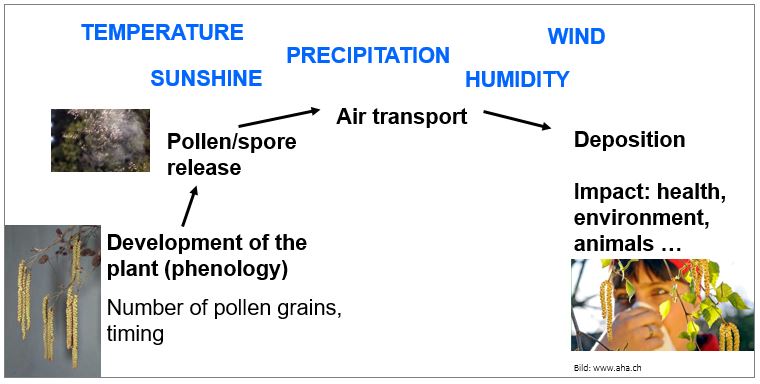Aerobiology deals with particles of biological origin in the atmosphere (known together as bioaerosols), both outdoors and indoors. It researches its sources, the emissions, propagation and effects on humans and on the environment. For example, many people have allergic reactions to inhaled biological particles and many human, animal and plant pathogens are transported by the air. In addition to pollen and fungal spores, the air contains also bacteria, viruses, protozoa and fragments of any biological origin and which are vectors for many other human, animal and plant diseases. Due to the many aspects of aerobiology, this science is very interdisciplinary.
An important focus of aerobiology is the field of seasonal, weather and climate-dependent allergies to pollen and spores. In the history of SGA(SSA, it is therefore mainly allergologists who dealt with aerobiology. But also meteorologists, climatologists, biologists, physicists and many other sciences are important to understand and explain the connections between the occurrence, distribution and changes of pollen and spores, its allergens and the impact on the people. For the public observations, measurements, forecasts and information about pollen that trigger allergies are important.
In the air outside and inside buildings, substances such as smoke, dust, aerosols (droplets), gases, spores, bacteria and viruses can directly cause diseases. Often specific abiotic and biotic conditions (climate) are necessary for the life of plants and animals (especially insects, mites). These can transmit pathogens of infectious diseases, interact with allergens or modify the immune reaction.

Weather and climate are the most important factors, which influence the aerobiological cycle from release to transport and deposition.